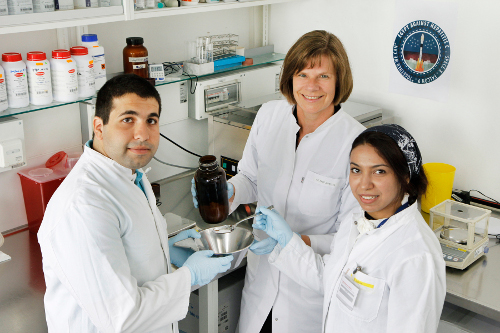Using AI to control energy for indoor agriculture
30 September 2024
Published online 29 October 2014
Two Egyptian scientists managed to crystallize two proteins of the hepatitis C virus in space in an effort to discover new cures.

© M. Stobrawe / MRI
In a four-week period, the crew of the International Space Station experimented on the samples, crystallizing them under microgravity conditions. The project was developed by two Egyptian scientists, Akram Amin Abdellatif and Hanaa Gaber of Technische Universität München after they beat 600 other submissions in an international space station research competition' last month.
It was the only project to be chosen from outside the US and is the first experiment involving Egyptian scientists to have been conducted on the ISS.
The samples crystals returned, frozen in canisters, early this week (26 October), after being delayed by adverse weather. They were sent to diffraction facilities for analysis.
“The proteins are HCV genome 4 as the purpose of this mission is to try understand the behaviour of this specific type which is located heavily in Egypt,” Abdellatif, also a researcher at the German Aerospace Center (DLR) and principle investigator of the space mission, told Nature Middle East.
Abdellatif says crystallizing proteins enables researchers to study them in three dimensions, unraveling the molecular compounds involved in protein structure and function.The research team includes Hanaa Gaber a PhD student at the Technical University of Munich, Institute of Virology and is supervised by Ulrike Protzer, the institute’s head.
The idea behind the project, Abdellatif explains, is to produce a space-developed protein that gives a clear, crystalline version of the proteins comprising hepatitis C, which is rife in Egypt.
Studying the virus with X-ray diffraction techniques provides new insight into virus structure, behavior and replication techniques, he adds. “A greater understanding of these processes leads to new methods for treating or preventing viral infection.”
Egypt has one of the world’s highest prevalence of hepatitis C. Around 15% of 15-59 year-olds are infected, according to an estimate by the Egyptian health ministry in 2008. The virus attacks the liver and can cause cancer and organ failure.
Besides a target treatment, Abdellatif hopes the project will foster a new connection between Egypt and international space programs. “The higher the resolution of this picture of the target's three-dimensional structure, the more accurate our guesses will be as to what drugs can potentially be effective.” says Fareed Aboul-ela, associate professor of Biophysics at the University of Science and Technology at Zewail City, who was not involved in the project.
Aboul-ela says: Generally, treatment developed in the West is mainly effective against HCV genotype I, “which is the most prevalent genotype in the US and many western countries. In Egypt, and other parts of Africa and the Middle East, the most prevalent genotype is type 4 and it’s sometimes susceptible to the standard treatment with interferon plus ribavirin, but in many cases it is not.”
He adds that there is a need for new therapies that are effective against genotype 4. There is a large number of Egyptian patients who are not responding to the standard therapy and who have little hope of responding to the new ones that are so far available.
Determining the three-dimensional structure of NS5B from genotype 4 will help us understand, at the molecular level, why some patients may not respond to the new HCV drugs, and what can be done to try to improve the response rate, Aboul-ela adds.
doi:10.1038/nmiddleeast.2014.260
Stay connected: